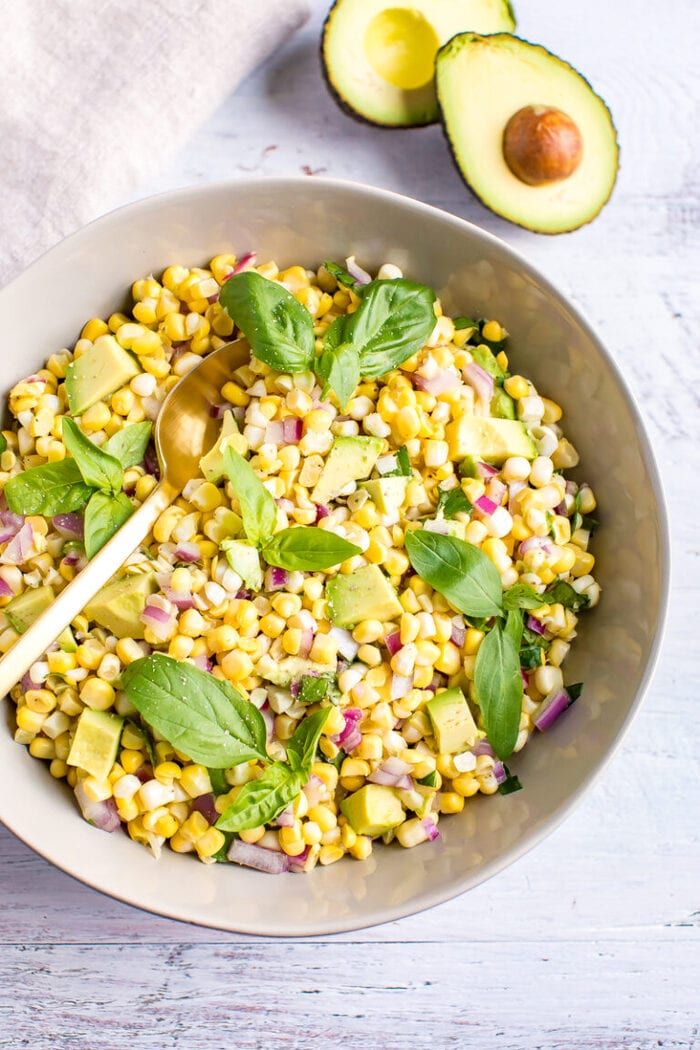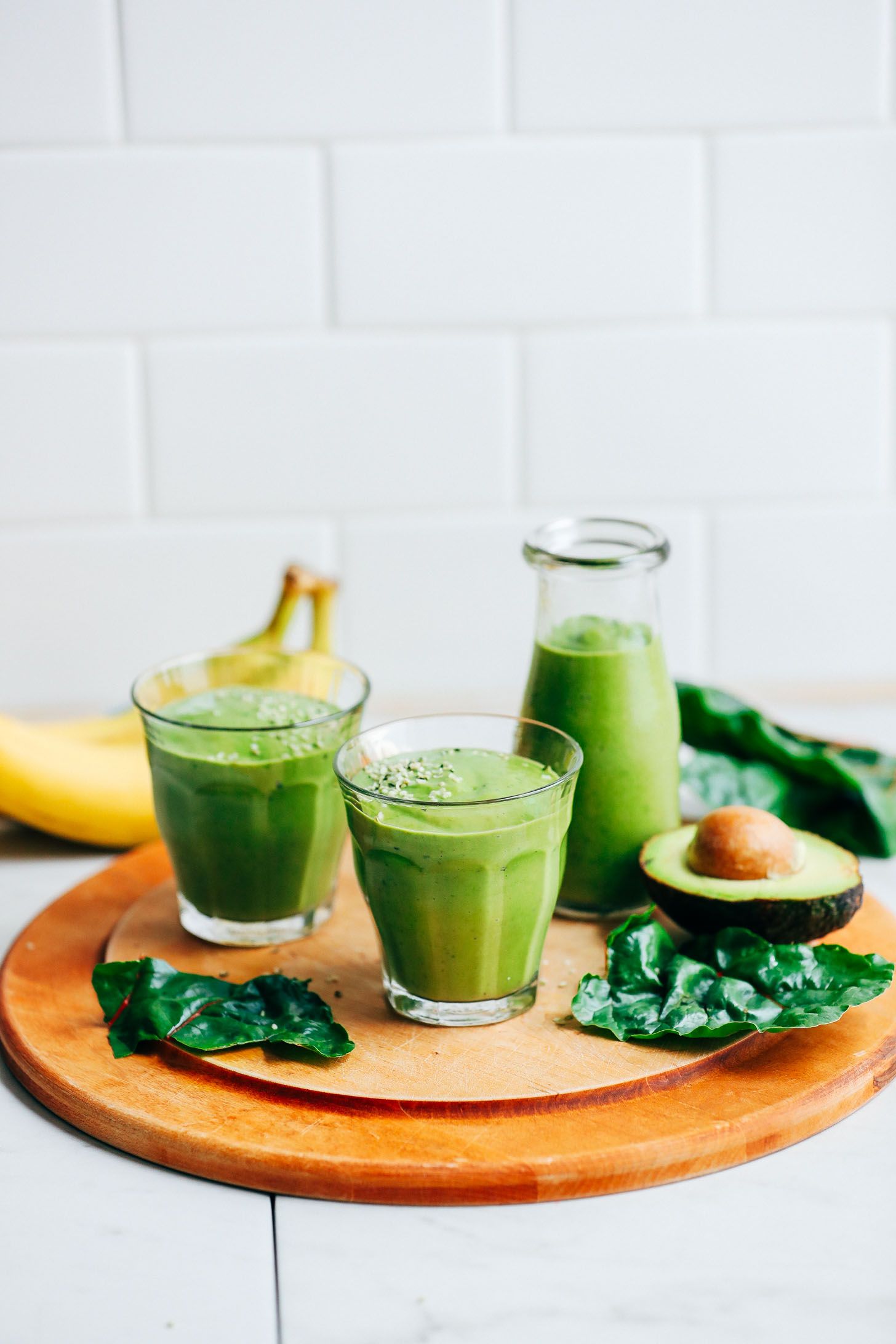How Many Calories Are Actually In An Avocado?
Few fruits have inspired as much obsession as avocados. And, honestly, it’s well-deserved; avocado makes toast, tacos, and salads taste wayyyy better.
The green goodness, which hails from Central and South America, started becoming trendy around the same time people stopped stressing over fat a few years back, says nutritionist Jessica Cording, RD, author of The Little Book of Game-Changers. “It’s become more socially acceptable—finally—to eat fat,”she says.
Despite the hype, though, there’s a ~little~ bit of confusion about how avocados can be so high in fat (and thus calories, too!) but still good for you. Rest assured, the fats in avocados (called monounsaturated fats) are heart-healthy and may help raise “good” HDL cholesterol and lower “bad” LDL cholesterol,” Cording explains. What’s not to love about that?
Plus, “[avocados] are high in fiber, which is also good for heart and gut health,” she adds. Score.
There are also so many ways to add this fatty fruit to your plate. “Avocados can be eaten sweet, in a pie with lime and sugar and a chocolate crust, or savory as guacamole and avocado toast,” says nutritionist Sonya Angelone, RD, a spokeswoman for the Academy of Nutrition and Dietetics.
So, no, avocados aren’t just another calorie-laden trend (cough cough, acai bowls). There are a few things you should know about ’em, though. Here’s what the experts say.
How many calories are in an avocado?
Okay, so one whole avocado contains 322 calories, according to the USDA. That may seem like a lot, but a single serving of the fruit actually racks up only about 107 calories.
Wait, then what counts as a serving of avocado?
Here’s the deal: As tempting as it is to just down the whole ‘cado in one sitting, that baby is packed with healthy fats—and with fats, come calories.
That’s why the recommended serving size ranges from one-fifth of the fruit (according to some RDs) to one-third of the fruit (according to the California Avocado Commission and the FDA).
Since those guidelines aren’t exactly cut and dry, you should totally experiment with your avocado serving sizes to figure out what feels most satiating for you. “Personally, I always opt for at least one-half of an avocado,” says Kara Lydon, RD, owner of Kara Lydon Nutrition and The Foodie Dietitian Blog.
Just keep in mind, avocados contain about a third of your daily recommended “healthy fat” content (more on that later).
Avocado nutrition is pretty dang impressive.
Just check out the nutritional breakdown:
Whole Avocado
1/3 Avocado
1/5 Avocado
Calories
322
106
64
Fat
29 g
9.7 g
5.9g
Protein
4 g
1.3 g
0.8 g
Carbs
17 g
5.6 g
3.4 g
Fiber
14 g
4.4 g
2.7 g
No matter how you slice them, avocados are pretty good for you. “Avocados are a nutrient powerhouse. They contain nearly 20 different vitamins, minerals, and nutrients,” says Lydon.
Case in point: One-half of the fruit offers about seven grams of fiber, nearly 30 percent of your recommended daily value of fiber. It’s also a good source of vitamin C, which serves to keep your skin supple and healthy.
If you need more convincing, Lydon points out that they also contain an impressive amount of potassium. Eat half of an avocado, and you’ll get 488 mg of potassium.(That’s more potassium than a medium banana, which has 422 mg. Score!)
You’ll also get bone-building vitamin K (7 percent of your DV), as well as folate (8 percent of your DV), which is especially important if you’re expecting or want to be pregnant soon.
But what about all the fat?
While the fat content in avos may seem steep, they’re made up of healthy monounsaturated fatty acids (MUFAs). Eating more of those is associated with a reduced risk of heart disease and metabolic syndrome, lower “bad” LDL cholesterol, and less belly fat. It also helps keep you satisfied and satiated between meals.
You should be getting around 20 percent of your calories from omega-3 and monounsaturated fats per day—or 60 grams per day if you’re eating 2,000 calories. A whole avocado has almost 20 grams of monounsaturated fats by itself. If you eat one whole avocado on toast for breakfast, you’re already a third of the way through your daily fat intake. Again, that’s okay—as long as you balance your fats for the rest of the day accordingly.
There are so many delicious ways to eat avocado.
There’s no shame in cutting an avocado open, sprinkling it with some sea salt (maybe a squeeze of lemon), and eating it was a spoon as a snack. Or hey, go forth and make your beloved avocado toast.
But there are also so many other ways to use this versatile fruit. Lydon likes to use it as a base for chickpea salad, or a topping for a loaded sweet potato. She’s also a fan of smashing it with white beans, lemon, and herbs as a zesty sammie spread. Or, blend it with Greek yogurt as a sauce to toss with pasta. (All. The. Yum.) Here are a few more ideas for good-for-you avocado eats:

Chocolate Avocado Mousse
This creamy, dreamy sweet treat will hit that chocolate craving like no other. Bonus: It’s totally vegan, and gets its creaminess from yours truly, the avocado.
Get the recipe
Per serving: 380 calories, 27 g fat (15 g saturated), 10 mg sodium, 36 g carb, 8 g fiber, 24 g sugars (14 g added sugars), 4 g protein

Avocado Corn Salad
Brittany over at Eating Bird Food combines two summer staples—corn and avocado—into a dish you’ll deem the salad of the summer.
Get the recipe
Per serving: 114 calories, 3 g fat, 20 g carbohydrates, 2 g fiber, 1 g sugar, 3 g protein

Creamy Avocado Banana Green Smoothie
Minimalist Baker is a genius when it comes to her take on this thick and luscious drink: combining avocado and banana with greens, protein powder, and dairy-free milk. “Optional” add-ins, including seeds, adaptogen powder, or frozen cukes, amp up the nutrition factor even more.
Get the recipe
Per serving: 146 calories, 6 g fat (1 g saturated), 18.2 g carbohydrates, 5.3 g fiber, 7.4 g sugar, 6.9 g protein
In short, avocados are creamy, nutrient-rich, and absolutely delicious. You can (and should) eat it all sorts of fun ways—while sticking to a reasonable portion size, of course.
Source: Read Full Article
